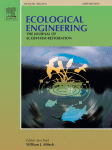View Item
- xmlui.general.dspace_homeCentros Regionales y EEAsCentro Regional La Pampa - San LuisEEA AnguilArtículos científicosxmlui.ArtifactBrowser.ItemViewer.trail
- DSpace Home
- Centros Regionales y EEAs
- Centro Regional La Pampa - San Luis
- EEA Anguil
- Artículos científicos
- View Item
Assessing the glyphosate tolerance of Lotus corniculatus and L. tenuis to perform rhizoremediation strategies in the Humid Pampa (Argentina)
Abstract
The broad-spectrum herbicide glyphosate (N – phosphonomethylglicine) is the most common pesticide used in the Humid Pampa, the main agricultural region in Argentina. According to agronomical practices and topogeographical characteristics of the region, rhizoremediation arises as a promising technology to mitigate glyphosate impact on health and agroecosystems. Lotus corniculatus L. (birdsfoot trefoil) and Lotus tenuis Waldst. et Kit. (=Lotus glaber Mill.,
[ver mas...]
The broad-spectrum herbicide glyphosate (N – phosphonomethylglicine) is the most common pesticide used in the Humid Pampa, the main agricultural region in Argentina. According to agronomical practices and topogeographical characteristics of the region, rhizoremediation arises as a promising technology to mitigate glyphosate impact on health and agroecosystems. Lotus corniculatus L. (birdsfoot trefoil) and Lotus tenuis Waldst. et Kit. (=Lotus glaber Mill., narrowleaf trefoil) were selected to carry out tolerance studies as the starting point of a rhizoremediation process. L. corniculatus presented the highest root and foliar tolerance to glyphosate, corresponding to 5.0 mg kg−1 and 700 g ha−1 respectively. The enzyme enolpyruvylshikimate-3-phosphate synthase (EPSP synthase) partial cDNA sequence and whole plant shikimate accumulation assay were performed on L. corniculatus in order investigate tolerance mechanisms. No amino acid substitution related to glyphosate tolerance was found on EPSP synthase cDNA sequence. The shikimate accumulation study indicates that limited uptake and/or translocation of the herbicide is the most probable tolerance mechanism. Results obtained in this study, plus the productive and adaptive advantages of L. corniculatus make it a valuable candidate to develop rhizoremediation strategies.
[Cerrar]

Fuente
Ecological engineering 90 : 392-398. (May 2016)
Date
2016
ISSN
0925-8574
Documentos Relacionados
Formato
pdf
Tipo de documento
artículo
Proyectos
(ver más)
INTA/PNNAT/1128043/AR./Los agroquímicos como fuente de contaminación difusa en agroecosistemas.
Palabras Claves
Derechos de acceso
Restringido
 Excepto donde se diga explicitamente, este item se publica bajo la siguiente descripción: Creative Commons Attribution-NonCommercial-ShareAlike 2.5 Unported (CC BY-NC-SA 2.5)
Excepto donde se diga explicitamente, este item se publica bajo la siguiente descripción: Creative Commons Attribution-NonCommercial-ShareAlike 2.5 Unported (CC BY-NC-SA 2.5)

